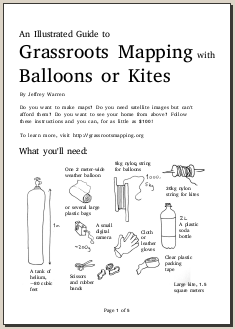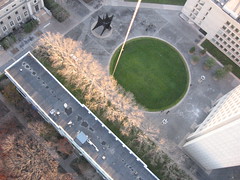One year after oil: Grand Isle State Park
May 30th, 2011 by Adam GriffithOn Thursday May 12th, PLOTS team members Jeff Warren, Shannon Dosemagen and I spent the afternoon mapping Grand Isle State Park using a pair of kites and our trusty Canon camera. The areas we mapped near the fishing pier in the park have been mapped on several other occasions by various means, most recently on the late February overflight by Shannon and me. (Stewart Long has done a great map using that data.) Our goal was to map the same area again to look for any changes to the shoreline and beach that may be associated with impact from the Deep Water Horizon oil spill in April, 2010.
We used our traditional method of suspending a lightweight, point and shoot Canon camera set to shoot continuously with the shutter fully depressed using a rubber band. This resulted in some quality shots of the pier and the beach, but the onshore winds made photography of the entire beach impossible due to the 45 degree flying angle of our Sutton Flowform kite. Onshore winds are a problem for capturing images of the beach using KAP and we are continually looking for solution to this specific problem as it represents the greater challenge of KAP when the goal is capturing a specific geographic area for study. In this particular case, the water wasn’t too deep for wading and I took the kite line a few hundred feet off shore to guide the camera directly over a flock of shore birds. This approach yielded some impressive, high resolution shots of at least 5 species of birds including Laughing Gulls, Caspian Terns, and an American Oystercatcher. This mapping mission demonstrated proof-of-concept for estimating bird densities using a method that minimizes disturbance in order to maximize data quality.











